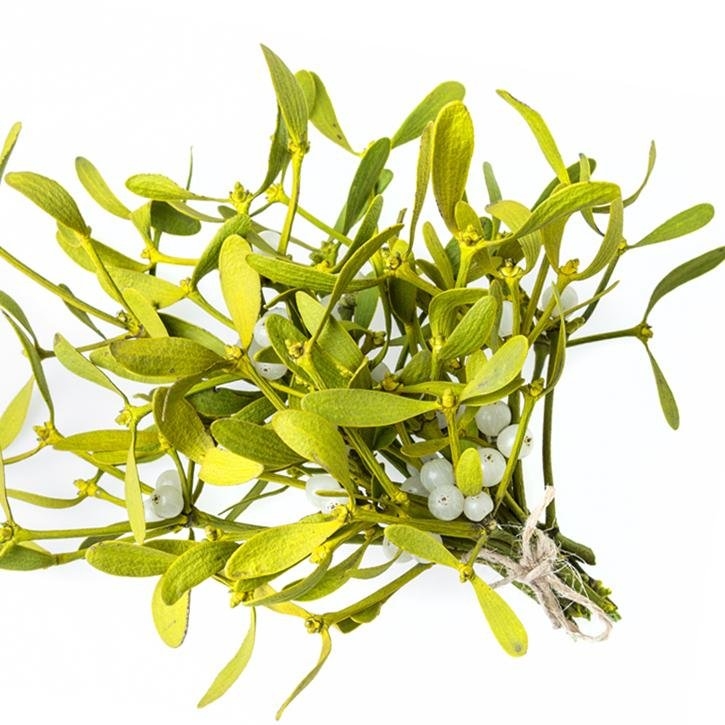Plant native to Europe, America and western and southern Asia. It is a woody hemiparasitic plant that grows on the branches of different trees such as apple trees, poplars or different varieties of pines, where it forms globular clumps. The stems, which can measure up to 1 meter, are divided from their base into several scattered, forked, cylindrical and divided by knots. The leaves, which are arranged in opposite pairs, are lanceolate, entire, leathery in texture and greenish-yellow in color. The flowers are small, dioecious (there are male and female flowers), and also greenish yellow. The fruit is a small berry, green when immature and turns white or yellow when ripe. The mesocarp contains a viscous pulp, usually with one or two seeds, which ripens in late autumn.
The aerial part is used.
The composition of the extracts may vary, both qualitatively and quantitatively, depending on the host plant and the time of collection, so it is necessary to use standardized preparations.
Mistletoe presents certain toxicity. Treatments should be discontinuous, progressive, starting with low doses and supervised by a professional.
-.Monografía de la SEFIT (Sociedad Española de Fitoterapia).
-.European Medicines Agency (EMA)-Committee on Herbal Medicinal Products (HMPC). Assessment report on Viscum album L., herba. London: EMA. Doc. Ref.: EMA/HMPC/246778/2009. Adopted: 13/9/2011.
.-Nazaruk J, Orlikowski P. Phytochemical profile and therapeutic potential of Viscum album L. Nat Prod Res. 2016;30(4):373-85.
-.Pelzer F, Tröger W, Nat DR. complementary treatment with mistletoe extracts during chemotherapy: safety, neutropenia, fever, and quality of life assessed in a randomized study. J Altern Complement Med. 2018;24(9-10):954-961.
-.Evans M, Bryant S, Huntley AL, Feder G. Cancer patients' experiences of using mistletoe (Viscum album): a qualitative systematic review and synthesis. J Altern Complement Med. 2016; 22 (2): 134-44.
-.Horneber MA, Bueschel G, Huber R, Linde K, Rostock M.Mistletoe therapy in oncology. Cochrane Database Syst Rev. 2008 Apr 16;2008(2):CD003297.
-.Zwierzina H, Bergmann L, Fiebig H, Aamdal S, Schöffski P, Witthohn K, et al. The preclinical and clinical activity of aviscumine: a potential anticancer drug. Eur J Cancer 2011; 47: 1450-1457.
